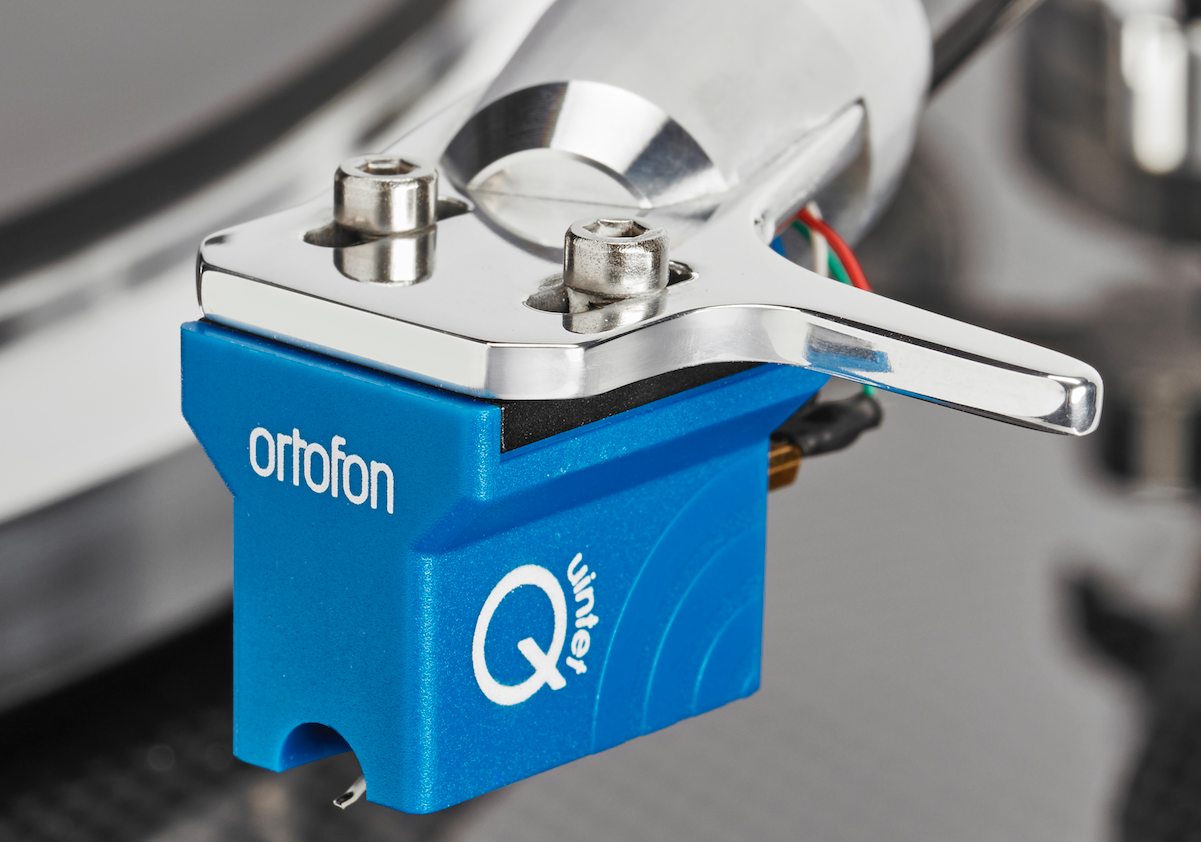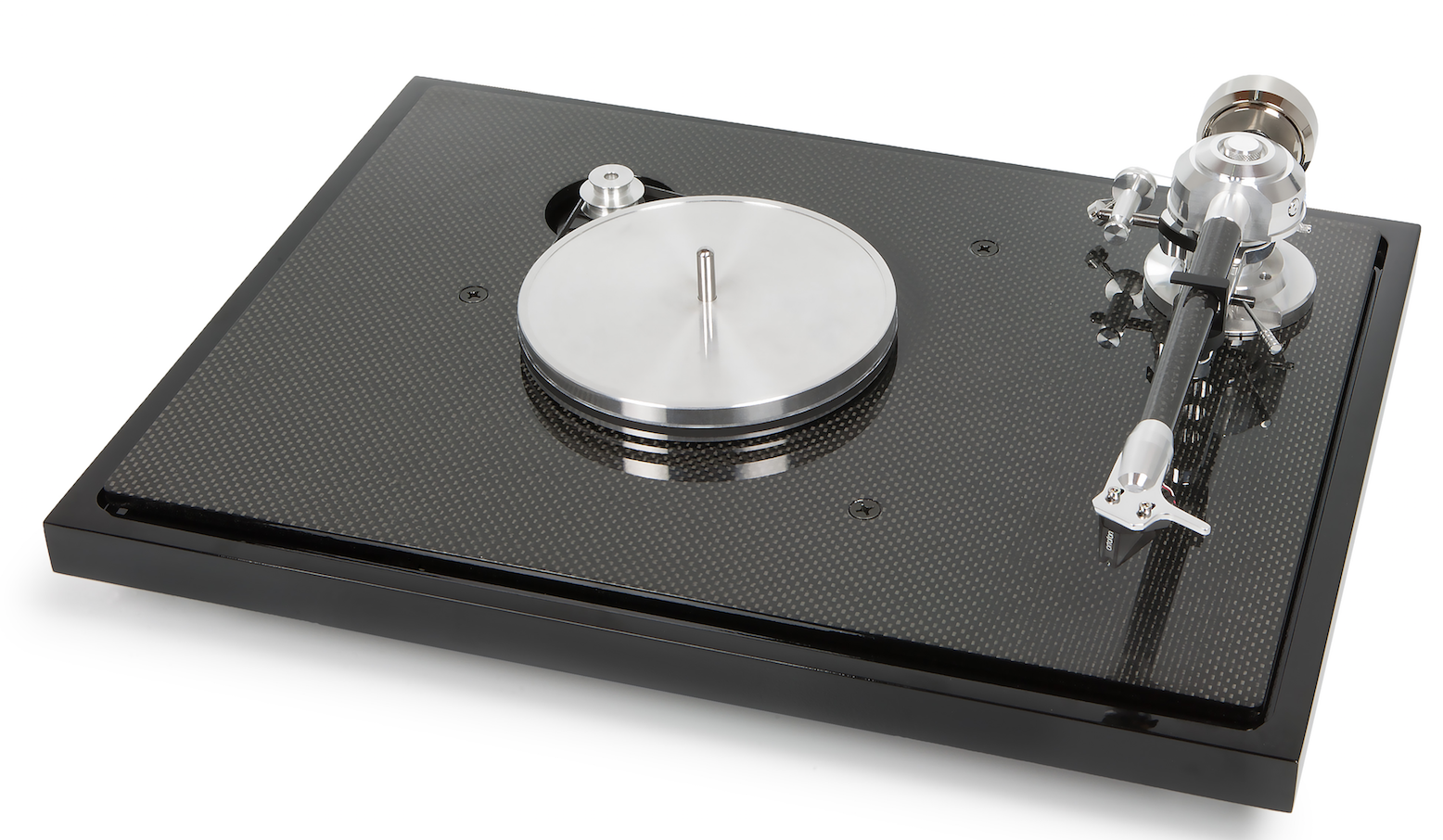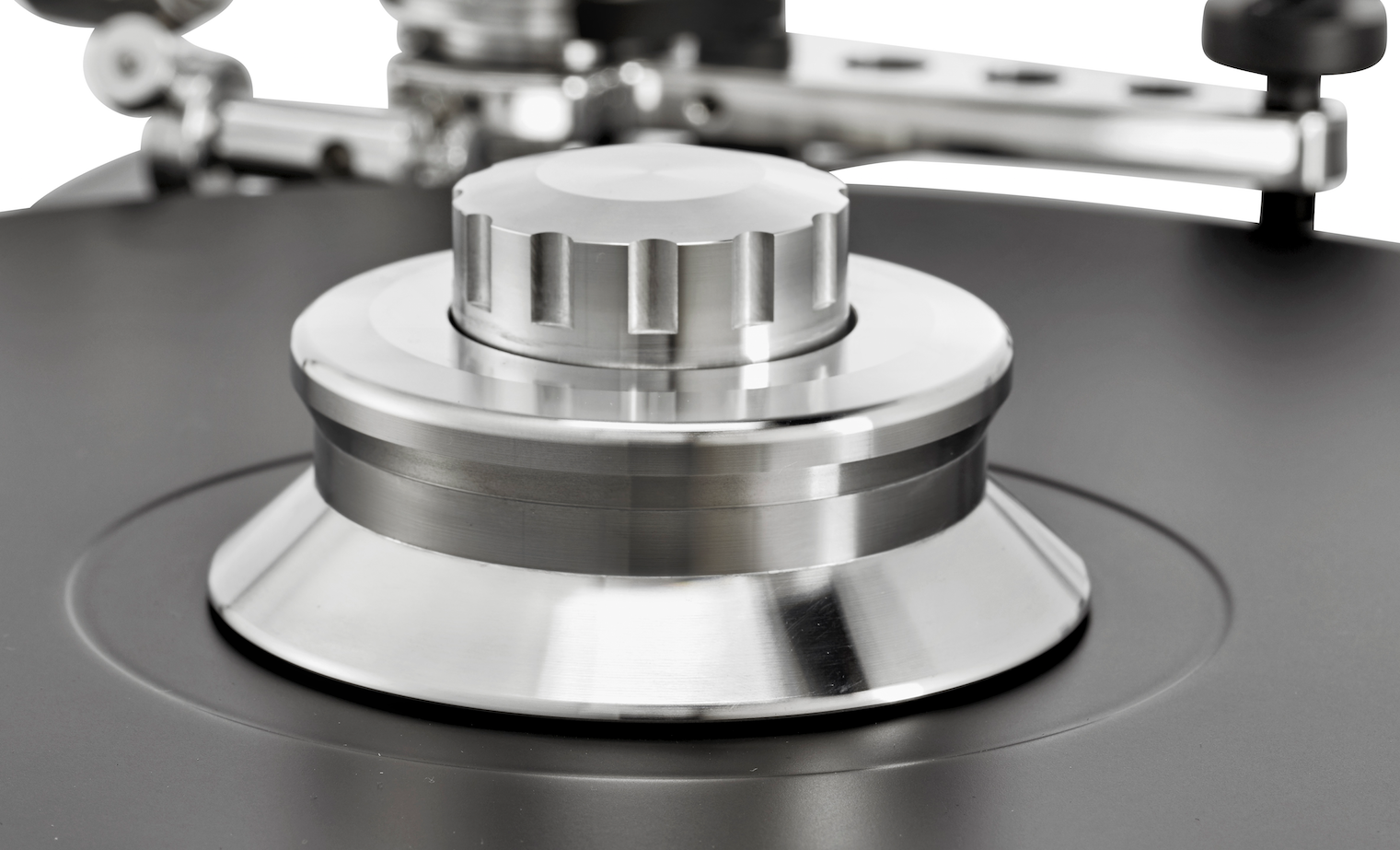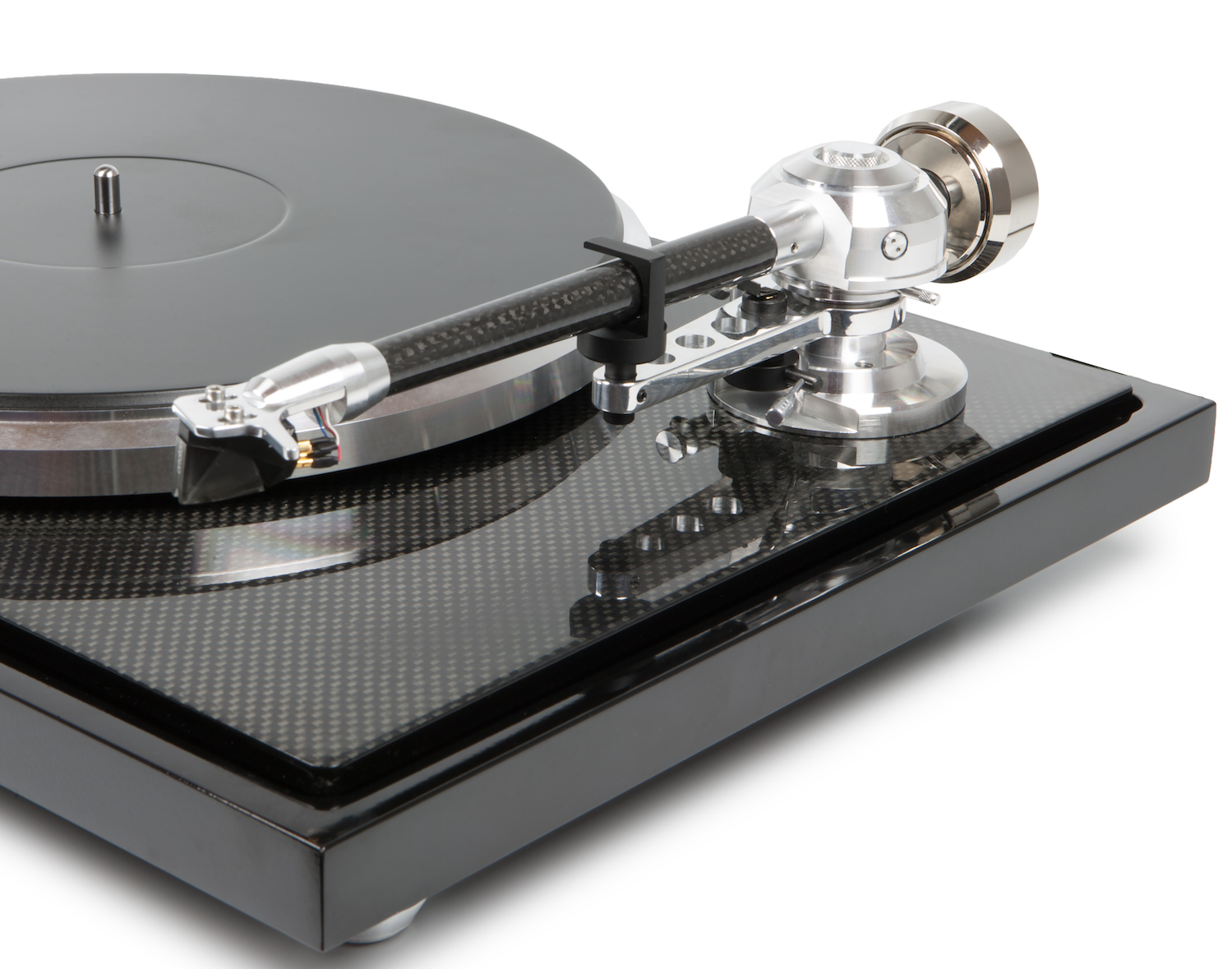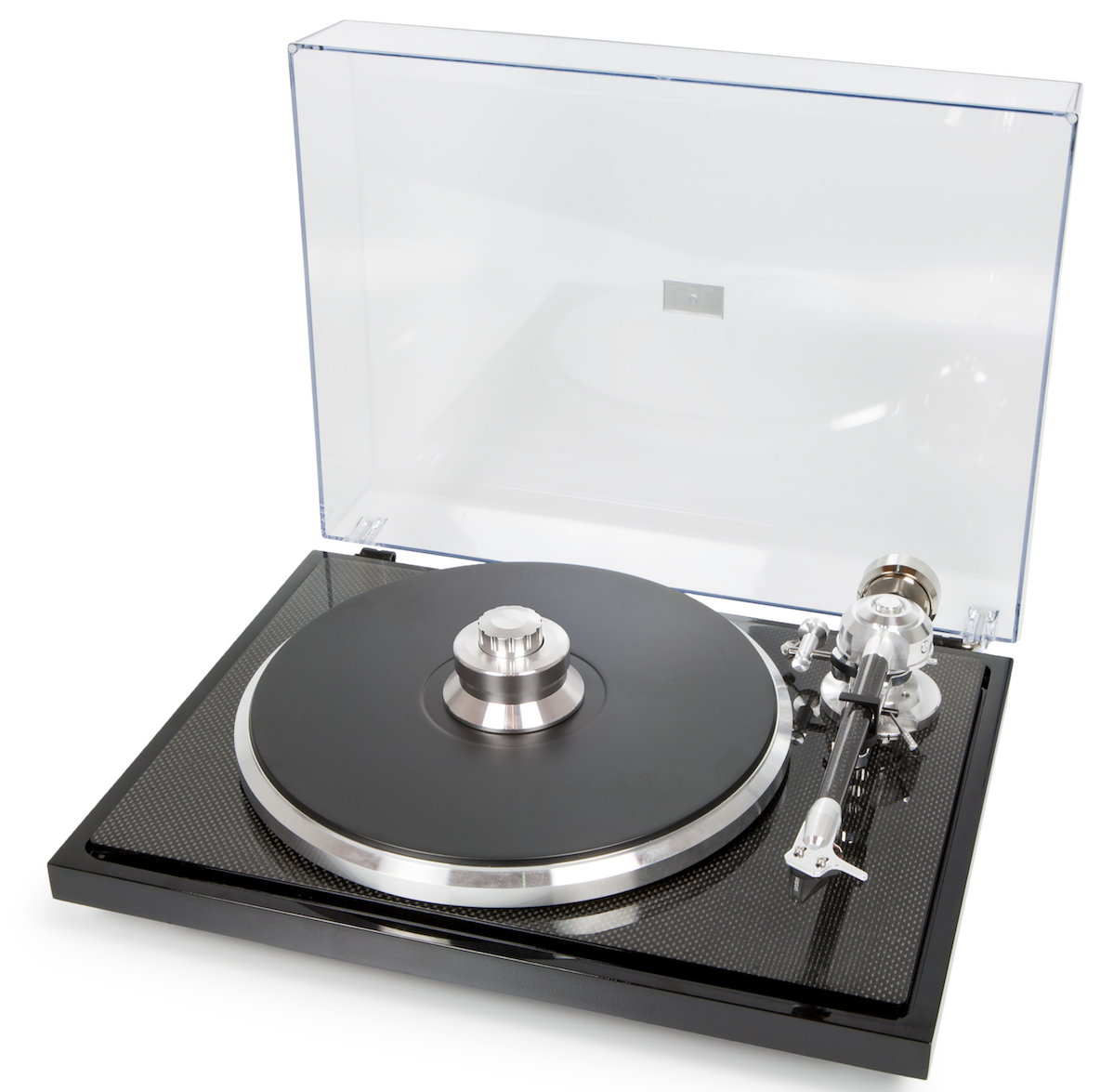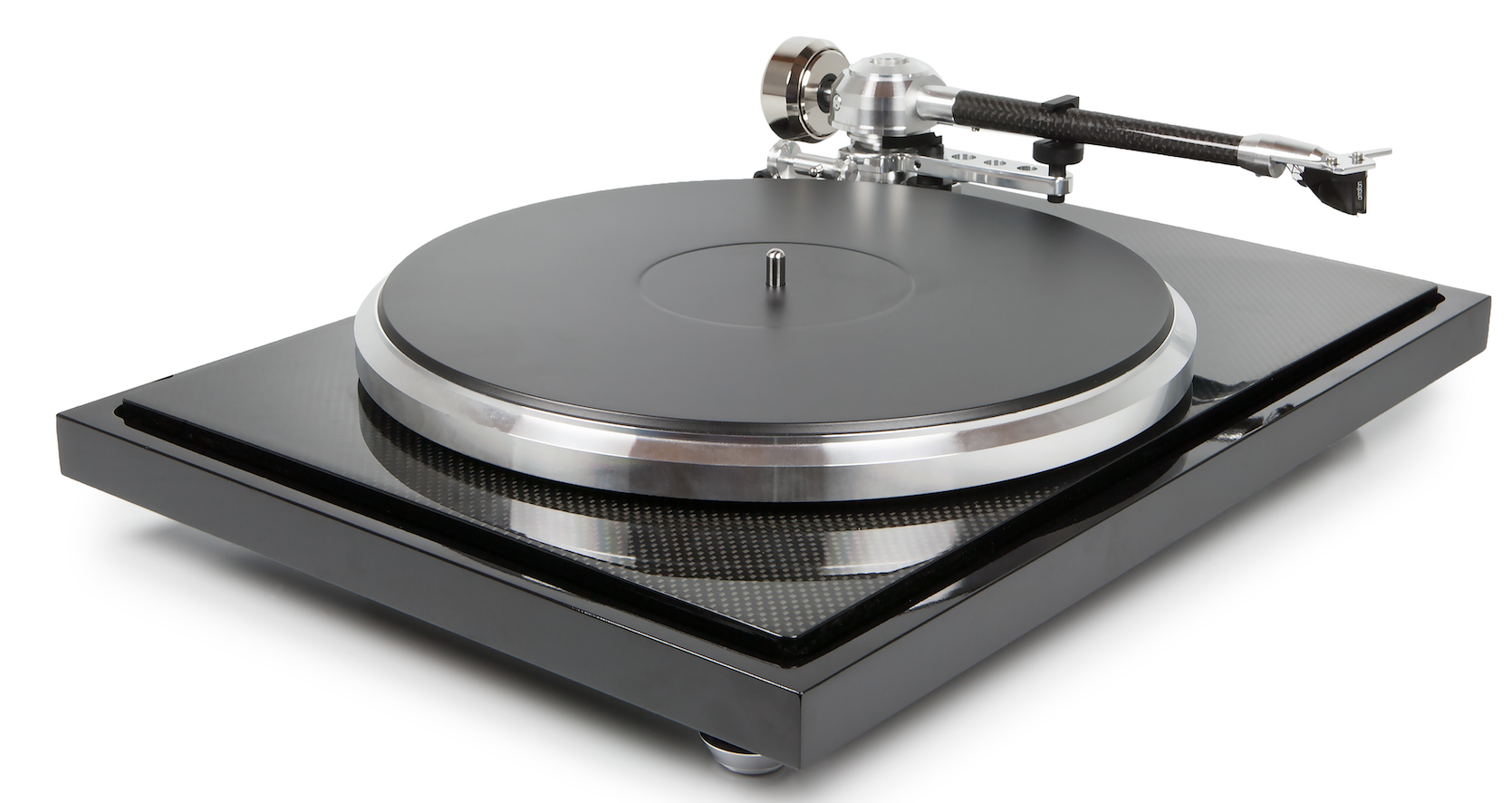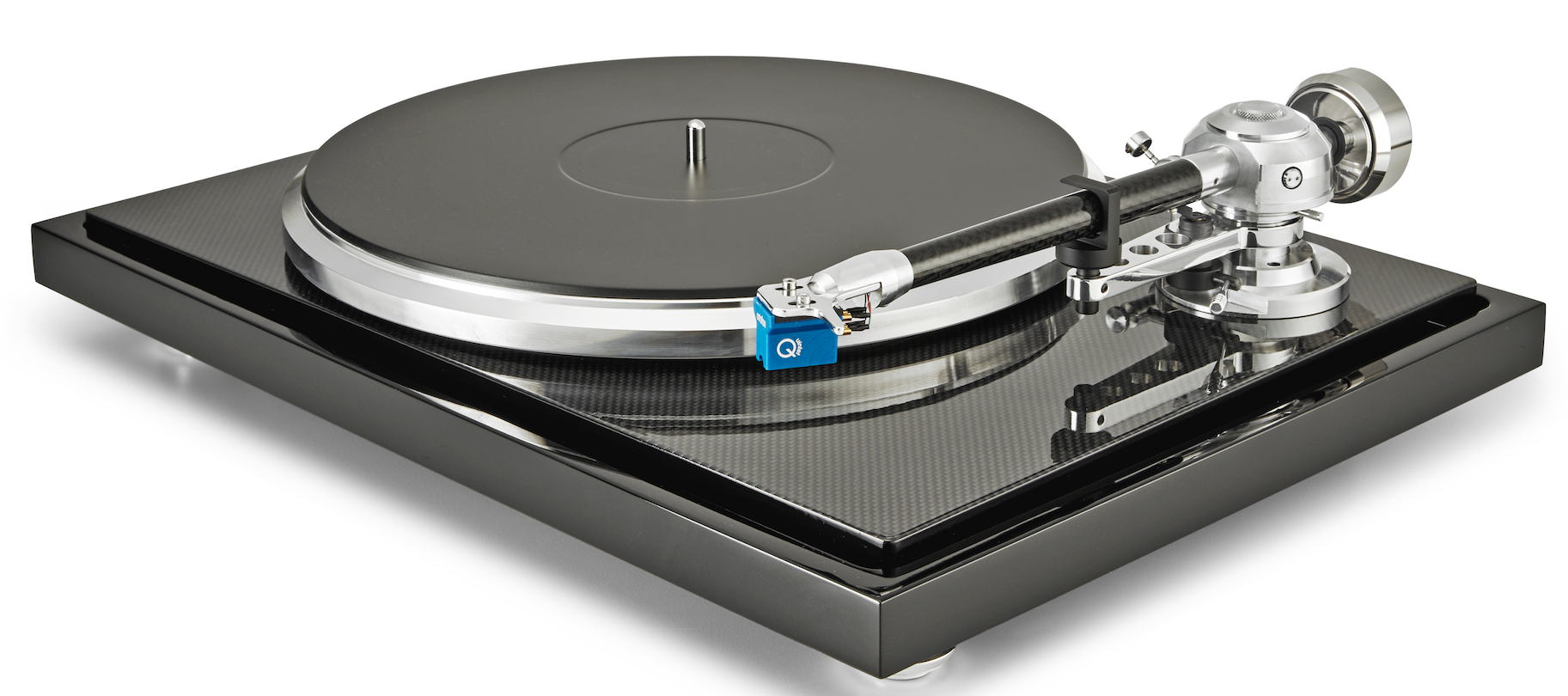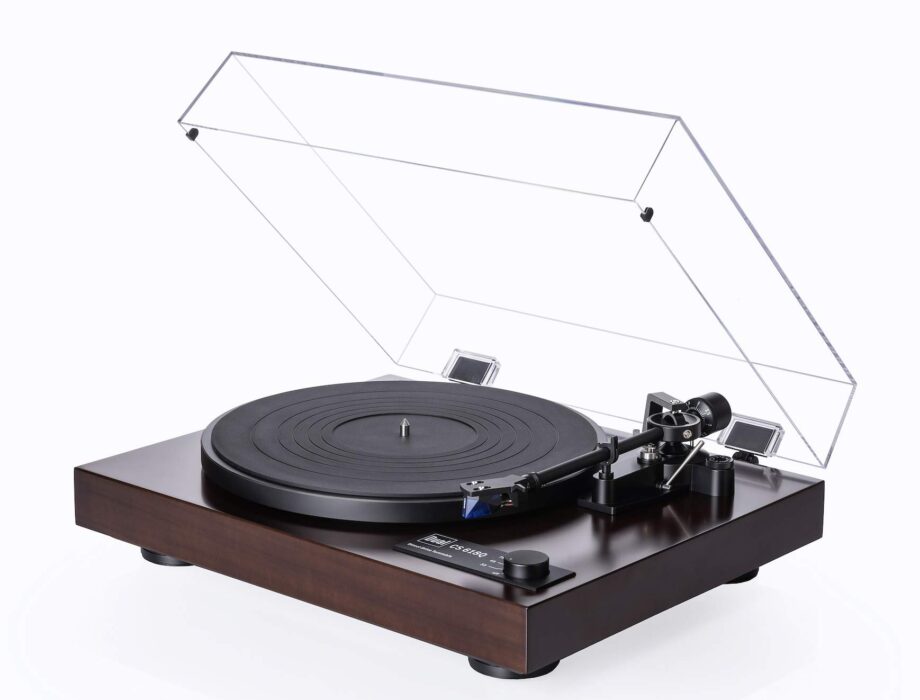The Article
C-Major Turntable Super Pack From EAT
29th April 2018
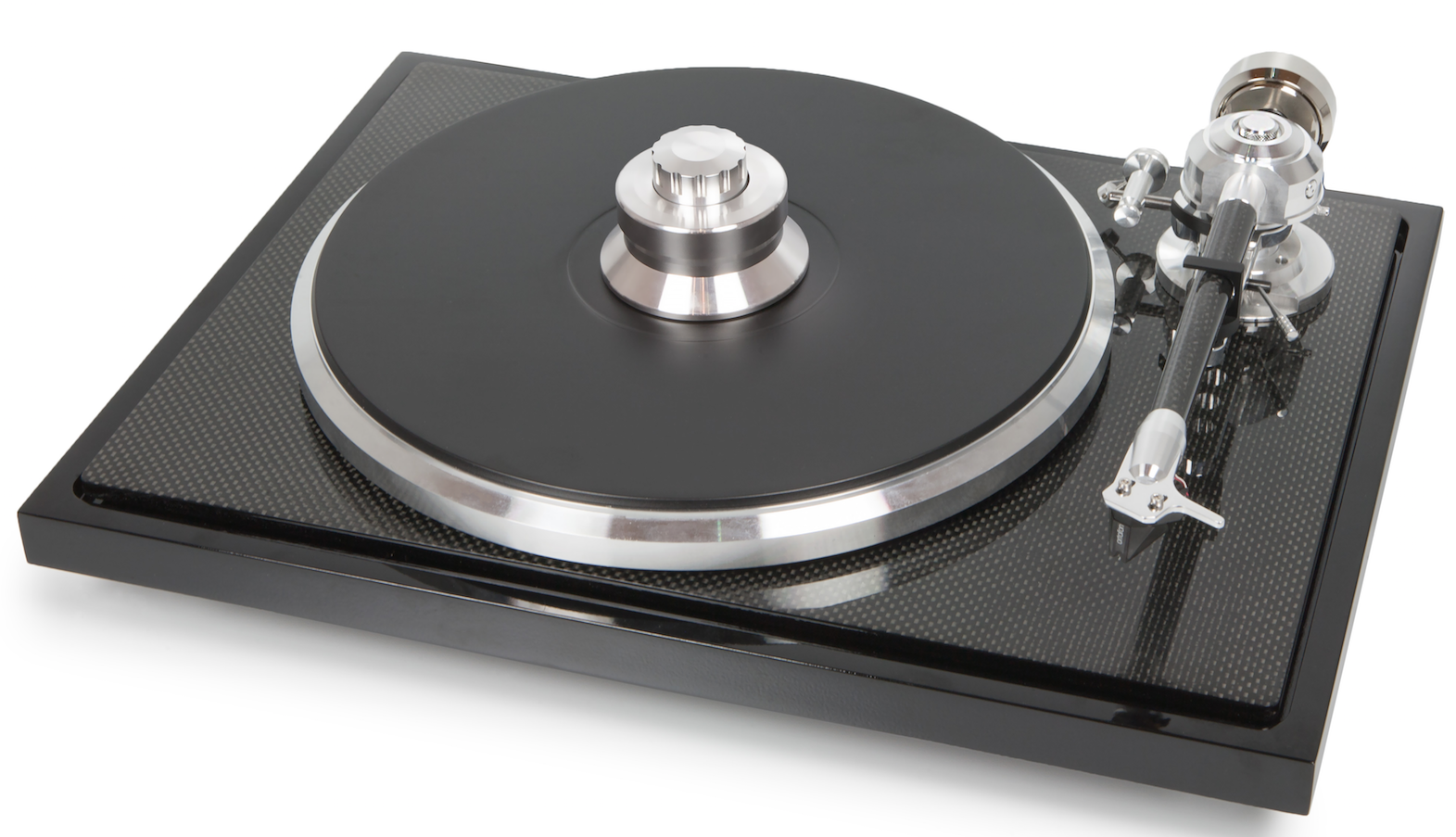
With the latest turntable from Austria’s EAT, Paul Rigby applied a range of cunning detective abilities to review the C-Major Super Pack
EAT (European Audio Team) produces a range of turntables, phono amps, cartridges and, for the specialist, individual valves (i.e. KT88s, 300Bs and more). It also has connections to the hugely popular turntable producer, Pro-Ject. Intimate connections, actually. EAT boss, Jozefina Lichtenegger, is married to Pro-Ject’s founder, Heinz Lichtenegger. All EAT turntable parts are made in the same industrial complex which keeps costs down but EAT is a wholly separate company with it’s own infrastructure, staff and designers.
The C-Major can be bought as a stand-alone item but I looked at a special offer pairing that has been branded as the ‘Super Pack’ adding an Ortofon cartridge for plug-and-play, ease of use.
Why the addition of a cartridge makes this a ‘Pack’, quite apart from a ‘Super Pack’, is a little mystifying. That’s not the biggest issue, though. The words ‘Super Pack’ attached to any EAT product is unfortunate. It sounds throwaway and nasty. “Pile ‘em high and sell ‘em cheap.” That’s what ‘Super Pack’ says to me. The EAT is better than that.
We’ve seen marketing gaffs occur in the hi-fi industry before. I featured one myself recently via Electrocompaniet. ‘Super Pack’ sounds a little too Tescos to me and better fits a jumbo bag of Cheese and Onion crisps or a Kentucky Fried Chicken meal deal. I also might have to resist adding an exclamation mark at the end of the term and presenting the words to you in Day-Glo green marker pen.

The EAT turntable itself is far from ‘value’ in look. This is a turntable that’s more chic than schtick. More à la mode than à la crude. The EAT C-Major actually looks rather compact and stylish. Quietly classy, in fact.
There are a thousand badged alternatives to ‘Super Pack’ – I would advise EAT to use one of them. And pronto.
The C-Major is effectively a slightly stripped version of the popular C-Sharp turntable. Hence, the C-Major offers a tonearm that spans 9” instead to the C-Sharp’s 10”. There is no separate speed control on the C-Major and the latter’s plinth is slightly smaller, as is the included clamp/stabiliser (we’ll get to this in a moment).
Despite the five seconds it took to create the crass title, the underlying notion of the promotion is a good one adding a rather nice Ortofon MC Quintet Blue to the C-Major’s arm. This cartridge arrived installed and fully set-up on my review sample.
The turntable itself is a nicely assembled product. Once you remove the transport screws from the chassis, you begin with three screw-in feet that are damped and, if you compress them in your hand before fitting, firmly squishy. The Carbon/MDF plinth is effectively in two parts with the upper and inner section suspended by a firm TPE (more stable than Sorbothane, apparently) suspension sandwich floating chassis system. The platter is a layered affair with the record-supporting reconstituted vinyl integrated into the aluminium/magnesium alloy platter structure. That sits on a sub-platter, holding the supplied belt. Under that is a bronze bearing.
That lot is powered by a proprietary AC motor and DC-driven AC generator for “speed stability”, all are fixed to the chassis. You change the belt on the pulley to alter speed from 33rpm to 45rpm and back again.
On top of that is the so-called ‘clamp’, which isn’t. A clamp, that is. You’re not supposed to tighten the clamp part during play, you only place the structure over the spindle during play so that it acts as a stabiliser. You can see the confusion in all of its glory within the manual itself HERE. Load the manual and scroll to page 17. It says, “Using the clamp – after placing a record on the platter, place the record clamp on the spindle and record. Do not screw the clamp for playback.”
Ignore it’s potential. If you are not supposed to actually ‘clamp’ the accessory to the spindle then it’s not a clamp, it’s a stabiliser. The use of the word in the manual and promotional literature is misleading and will produce instability in the midrange area if you do actually use the stabiliser as a clamp.
Onto the C-Note tonearm now which is a hybrid Cardan/unipivot made from carbon fibre with copper internal cable. Here, vertical tracking and stylus rake can be adjusted. It comes with a silicon damping liquid plus a lightweight, aluminium headshell.
The anti-skating compensator uses a nylon thread and must be passed around the back of the housing to hook onto a small peg on its outer side. This can be fiddly only if you lack patience. Take this part of the installation at a slow pace and you’ll be fine.
So what does this intriguing design sound like?
SOUND QUALITY
I began the sound test with a pair of prog ditties from Camel: Aristillus and Song Within a Song from Moonmadness (1976) and I decided to begin without the accompanying stabiliser. I’ve used turntables with integral clamps. My Avid Acutus has one and my Michell TecnoDec is bundled with one. It intrigues me, though, why any manufacturer should supply a turntable with an integral stabiliser as part of the product. Not a clamp, don’t forget, the clamp aspect of this device is not recommended during play but the free sitting stabiliser aspect of the device is. Why?
I found out.
The EAT, without the stabiliser, provided a big and expansive sound that pushed the soundstage to the left and right. It’s a bit of a show off and wants to be loved. It puts its heart and soul into the performance.
High frequency insight was good. Treble sparkled nicely with cymbal taps bringing to the ear a rich tonality that betrayed that ‘big piece of metal’ nature of the instrument. Mids were detailed too with analogue synth runs providing both the varying tone of the instrumental and associated noises, those ‘key hitting wooden stops’ type noises that just added to the atmosphere of the music while bass was compact and sprightly.
But. There was a ‘but’. There was some uncontrolled upper midrange frequencies during this time which added a stridency and, during crescendos, a slight brightness from lead guitar and solo synth.
I assumed that the stabiliser was there then to reduce noise directly over the bearing. So, on it went and up went the sound quality. The midrange calmed somewhat. Not entirely but there was an improvement. Allowing the midrange area to allow more space into the soundstage and revealing new layering from the analogue synths. The reduction in noise also allowed a sort of angelic “Aaahh’ effect on the left channel, via a synth, to emerge fully for the first time. This effected the entire mix because this bit integrated with the rest of the synth presentation, broadening the entire piece of music left and right.
Also benefitting were the cymbal taps which were far more effective, adding new variations in tone depending on how hard they were hit. The EAT now provided this and other information, giving the midrange a new transparency while the flute solo now had a balanced, more neutral performance. As for bass? Tonally it featured a new organic – less plastic – aspect.
All this from a stabiliser? Indeed. And it showed just how important that bit of metal is to this turntable. The stabiliser of the EAT squares the circle, if you see what I mean.
Well it does and it doesn’t. The stabiliser improved matters. There was no doubt. There remained a slight glare in there. The improvements were large but there was an itch at the back of my neck. Something was still not right. It was very frustrating.
Hence, if that stabiliser worked so well with the EAT. I wondered if my third party, HRS ADL would improve matters further. HRS is one of the world’s leaders in noise reduction and isolation and so I was chomping on the bit to see if the ADL would enhance sonics still further.
After all of 10 seconds play, I heard improvements.
Ever seen Mission Impossible? You know where the guys try to get past the security system? There’s always a laser beam running from one side of the room to the next that they can’t break isn’t there? And if they do, bam!, down come the metal shutters, etc.
To my ears, sitting in my chair, it was a bit like that. That there was a laser beam of glare. This time running left to right along the soundstage. Underneath this was the music. The EAT stabiliser reduced this beam effect. Introducing the HRS ADL helped a lot, providing further improvements – in the same direction as the EAT stabiliser, in fact, but more so.
So I ended the review for the day. Fairly satisfied that I had made my breakthrough and ready to write up my notes for this final review.
Yet, I remember walking out of my listening room and still feeling unsettled. There was something bothering me. Even so, I dismissed it. I was tired. I left it
Waking up, next morning, I couldn’t get the feeling out of my head. Something was still wrong with the sound, especially for this price point. There was a problem there. The stabilisers had helped a lot but not totally solved the case.
I returned to the scene of the crime and set about taking the C-Major apart to find the answer. I sound tested with and without the stabilisers again and even brought in a couple of others. Same conclusion. There remained a slight glare.
Don’t get me wrong and let’s not blow this all out of proportion. The issue was not massive, not screeching and it had been reduced a lot. In fact, may users would probably be able to live with the effect and not worry too much about it. I suppose it depends on your threshold. I couldn’t get past it.
Which is why I removed EAT’s feet and tried three, third party, variants. The sound changed but didn’t really improve. I put the EAT feet back on.
Then I tried the platter mat. I tried a basic, bog standard mat from a Rega RP3. For no more reason than it was to hand. No stabiliser this time. The only difference between the basic EAT turntable and my latest tweak was the mat. This was different. Not a massive success in sonic terms but the glare had fallen a tad from the soundstage. I was onto something. It was at this point that I fitted an Oyaide MJ-12 mat. This is a metal mat with strategically placed holes in it to remove potential standing waves. The difference was interesting. The glare had reduced.
This is a ‘package’ review and I wanted to restrict the review to that but this turntable has a platter problem. It was at this point that I removed the platter itself. I inserted a small screwdriver through the centre hole to act as a make-shift spindle, held the platter suspended by the screwdriver alone, sharply tapped the end and then the centre of the platter with my finger. It rings. Not like a bell, it’s not that bad of course but it does ring. I compared this to the acrylic platter of my Origin Live reference. The latter was completely dead. Zilch. Not a peep in ringing terms. So I tried the same trick on my old Michell Techodec. There is method in my madness with this choice because there is a slight ringing on the Michell (and you can hear that in the TecnoDec’s sound) but the ringing test response is more ‘strike’ than ‘ring’ for the latter. The ‘strike’ is the dominant sound. With the EAT the responses is the other way around: more ‘ring’ than ‘strike’. The ring is the dominant and louder sound. I even tried testing the platter from the budget Rega RP1. The RP1’s platter admirably dead, for the price, to be honest.
The EAT C-Major’s platter is an issue and, for this price, it shouldn’t be. That said, the MJ-12 cracks most of the case. So, if you fancy buying this deck, budget for a quality replacement patter mat.
Even better though was adding the HRS ADL stabiliser on top of the MJ-12.
What was left after my detective work? A cracking turntable, that’s what. The introduction of the track Aristillus exhibited a high-pitched synth solo that, with the mat/stabiliser, featured focus and precision and balanced the mix to a more neutral ground. It also moved a half step back into the mix and became part of the music instead of a chaotic wail. The martial aspect of the rhythm and beat here also sounded much more forceful on the beat itself. As if everyone was putting more effort into striking that beat. A subtle yet important part of the music because it helped the music make more sense.
The extra noise loss, the veiling noise I’m talking about here, also meant that the soundstage provided a layering of a sort. You had the cymbal taps out front, synth behind, vocals on top and so on. The organisation was more easily tracked by the ear.
Playing the jazz vocal of Fran Jeffries and Sex and the Single Girl, singing in front of a full jazz orchestra, I was impressed by the spirited energy from the orchestra. The EAT was now able to convey the agile aspect of the brass but also the specific growl and texture from the trombone, especially in the early seconds of the track while the slurping saxes provided a varying flow and produced a characterful grammar to the song. Jeffries’ own vocal was also quite jaunty and suggestive, the EAT managed to retain her suggestive emotional delivery but also gave her performance enough air to show the ear enough of ye olde ‘echo chamber’, that hung off her voice throughout.
CONCLUSION
Out of the box, the C-Major exhibits a varying upper midrange glare, depending on what accessories you add or leave off. As I say above, it’s not glass breaking in its effect and, if you like a solid state presentation, you might actually enjoy the output.
Forget EAT’s stabiliser, use it as a paper-weight. If a new platter is out of the question, you need a damn good platter mat to help deaden the original. The MJ-12 does so. I do know that the MJ-12 is not exactly easy to find so I would encourage experimentation. Oyaide’s own BR-12, an alternative with a rubber-based concoction, is more available. I was unable to try this mat on the EAT but have reviewed and used the mat in the past and like it very much. This product may just be the answer, if an MJ-12 is unavailable.
Then, if you can, add a quality stabiliser such as my HRS ADL. There’s others on the market which will also do well.
One thing is for sure, though, with the platter issues sorted, and the issues are very easy to correct, the C-Major remains a good quality turntable.
It is, therefore, well worth buying the above accessories to ‘fix’ this deck because, once the EAT C-Major sings, it can dazzle.
EAT C-Major Super Pack
Price: £1,998 (or £1,798 without the cartridge)
Tel: 020 8971 3909
Website: www.absolutesounds.com
GOOD: midrange transparency, soundstage structure, tonality, bass vitality
BAD: platter, ‘clamp’
RATING: 6
[Don’t forget to check out my new Facebook Group, The Audiophile Man: Hi-Fi & Music here: www.facebook.com/groups/theaudiophileman for exclusive postings, exclusive editorial and more!]
REFERENCE
Origin Live Sovereign turntable
Origin Live Enterprise 12″ arm
Transfiguration Proteus cartridge
Wilson Benesch Circle turntable
Benz Glider Cartridge
Icon PS3 phono amplifier
Aesthetix Calypso pre-amp
Icon Audio MB845 Mk.II monoblock amplifiers
Quad ESL-57 speakers with One Thing upgrade
Vertex AQ & Tellurium Q cable
Blue Horizon Professional Rack System
Harmonic Resolution Systems Noise Reduction Components
All vinyl was cleaned using an Audio Desk’s Ultrasonic Pro Vinyl Cleaner

